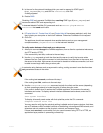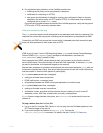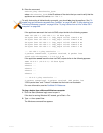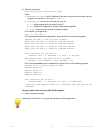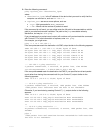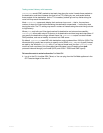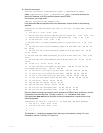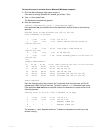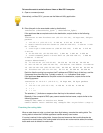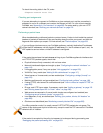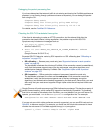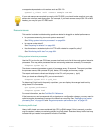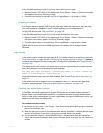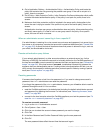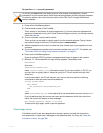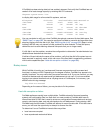
Fortinet 651 FortiWeb 5.0 Patch 6 Administration Guide
To trace the route to a device from a Linux or Mac OS X computer
1. Open a command prompt.
2. Enter (the path to the executable varies by distribution):
traceroute {<destination_ipv4> | <destination_fqdn>}
If the appliance has a complete route to the destination, output similar to the following
appears:
traceroute to www.fortinet.com (66.171.121.34), 30 hops max, 60 byte
packets
1 172.16.1.2 (172.16.1.2) 0.189 ms 0.277 ms 0.226 ms
2 static-209-87-254-221.storm.ca (209.87.254.221) 2.554 ms 2.549
ms 2.503 ms
3 core-2-g0-1-1104.storm.ca (209.87.239.129) 2.461 ms 2.516 ms
2.417 ms
4 67.69.228.161 (67.69.228.161) 3.041 ms 3.007 ms 2.966 ms
5 core2-ottawa23_POS13-1-0.net.bell.ca (64.230.164.17) 3.004 ms
2.998 ms 2.963 ms
(Output abbreviated.)
16 12.116.52.42 (12.116.52.42) 94.379 ms 94.114 ms 94.162 ms
17 203.78.181.10 (203.78.181.10) 122.879 ms 120.690 ms 119.049 ms
18 203.78.181.130 (203.78.181.130) 89.705 ms 89.411 ms 89.591 ms
19 fortinet.com (66.171.121.34) 89.717 ms 89.584 ms 89.568 ms
Each line lists the routing hop number, the IP address and FQDN (if any) of that hop, and the
3 response times from that hop. Typically a value of <1ms indicates a local router.
If the appliance does not have a complete route to the destination, output similar to the
following appears:
traceroute to 10.0.0.1 (10.0.0.1), 30 hops max, 60 byte packets
1 * * *
2 172.16.1.10 (172.16.1.10) 4.160 ms 4.169 ms 4.144 ms
3 * * *
4 * * *^C
The asterisks ( * ) indicate no response from that hop in the network routing.
Relatedly, if the computer’s DNS query cannot resolve the host name, output similar to the
following appears:
example.lab: Name or service not known
Cannot handle "host" cmdline arg `example.lab' on position 1 (argc 1)
Examining the routing table
When a route does not exist, or when hops have high latency, examine the routing table. The
routing table is where the FortiWeb appliance caches recently used routes.
If a route is cached in the routing table, it saves time and resources that would otherwise be
requir
ed for a route lookup. If the routing table is full and a new route must be added, the oldest,
least-used route is deleted to make room.
Alternatively, on Mac OS X, you can use the Network Utility application.



